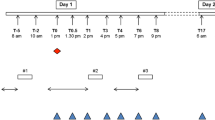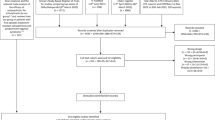Abstract
Despite vast clinical experience with antipsychotics, there is no broad consensus on the doses of these substances that should be administered. Currently, most antipsychotics are administered empirically according to clinical dose-finding studies, in which arbitrarily selected doses were tested to find the ‘most efficient’ dose range in a patient population, with no regard for the molecular effects of the tested drug.
Brain imaging studies using nuclear medical techniques, such as positron emission tomography (PET) or single photon emission computed tomography (SPECT), can now provide a rationale for doses, directly derived from the central effects of the drugs on neurotransmitter receptors measured in vivo. PET results indicate that occupancy of at least 65% of dopamine D2 receptors is needed for clinical response to antipsychotics, and that occupancy rates exceeding 72 and 78% are associated with a high risk for elevation of prolactin levels and motor adverse effects, respectively. For example, clinical studies with haloperidol do not point to an advantage of dosages exceeding 5 mg/day. The relevance of D2 receptor occupancy for drug administration is also borne out by studies relating the effects of antipsychotics to their D2 receptor occupancy in relevant animal models.
Taken together, neuroimaging and clinical studies, as well as animal models, provide a rationale for the use of relatively low doses of typical antipsychotics and equivalent doses of novel antipsychotics. The lower risk of adverse effects with appropriate doses of antipsychotics may further enhance compliance and outcome. This seems to be particularly important in individuals experiencing a first episode of schizophrenia, as they appear to be especially responsive to pharmacotherapy and quite sensitive to adverse effects.

Similar content being viewed by others
References
Seeman P, Lee T, Chau-Wong M, et al. Antipsychotic drug doses and neuroleptic/dopamine receptors. Nature 1976; 261(5562): 717–9
Seeman P, Corbett R, Van Tol HH. Atypical neuroleptics have low affinity for dopamine D2 receptors or are selective for D4 receptors. Neuropsychopharmacology 1997; 16(2): 93–110, discussion 11-35
American Psychiatric Association. Practice guideline for the treatment of patients with schizophrenia. Am J Psychiatry 1997; 154(4 Suppl.): 1–63
American Psychiatric Association. Practice guideline for the treatment of patients with delirium. Am J Psychiatry 1999; 156(5 Suppl.): 1–20
Farde L, Wiesel FA, Halldin C, et al. Central D2-dopamine receptor occupancy in schizophrenic patients treated with antipsychotic drugs. Arch Gen Psychiatry 1988; 45(1): 71–6
Baron JC, Martinot JL, Cambon H, et al. Targets for neurotransmitter receptor research using PET scan: the neuroleptic binding site. Psychopharmacol Ser 1989; 7: 20–31
Brücke T, Podreka I, Angelberger P, et al. Dopamine D2 receptor imaging with SPECT: studies in different neuropsychiatric disorders. J Cereb Blood Flow Metab 1991; 11(2): 220–8
Pilowsky LS, Costa DC, Ell PJ, et al. Clozapine, single photon emission tomography, and the D2 dopamine receptor blockade hypothesis of schizophrenia. Lancet 1992; 340(8813): 199–202
Farde L, Nordstrom AL, Wiesel FA, et al. Positron emission tomographic analysis of central D1 and D2 dopamine receptor occupancy in patients treated with classical neuroleptics and clozapine. Relation to extrapyramidal side effects. Arch Gen Psychiatry 1992; 49(7): 538–44
Kapur S, Zipursky R, Jones C, et al. Relationship between dopamine D(2) occupancy, clinical response, and side effects: a double-blind PET study of first-episode schizophrenia. Am J Psychiatry 2000; 157(4): 514–20
Farde L, Nordstrom AL, Nyberg S, et al. D1-, D2-, and 5-HT2-receptor occupancy in clozapine-treated patients. J Clin Psychiatry 1994; 55Suppl. B: 67–9
Busatto GF, Pilowsky LS, Ell PJ, et al. Dopamine D2 receptor occupancy in vivo and response to the new antipsychotic risperidone. Br J Psychiatry 1993; 163: 833–4
Kapur S, Remington G, Zipursky RB, et al. The D2 dopamine receptor occupancy of risperidone and its relationship to extrapyramidal symptoms: a PET study. Life Sci 1995; 57(10): L103–7
Küfferle B, Brücke T, Topitz-Schratzberger A, et al. Striatal dopamine-2 receptor occupancy in psychotic patients treated with risperidone. Psychiatry Res 1996; 68(1): 23–30
Pilowsky LS, Busatto GF, Taylor M, et al. Dopamine D2 receptor occupancy in vivo by the novel atypical antipsychotic olanzapine — a 123I IBZM single photon emission tomography (SPET) study. Psychopharmacology (Berl) 1996; 124(1–2): 148–53
Tauscher J, Küfferle B, Asenbaum S, et al. In vivo 123I IBZM SPECT imaging of striatal dopamine-2 receptor occupancy in schizophrenic patients treated with olanzapine in comparison to clozapine and haloperidol. Psychopharmacology (Berl) 1999; 141(2): 175–81
Kapur S, Zipursky RB, Remington G, et al. 5-HT2 and D2 receptor occupancy of olanzapine in schizophrenia: a PET investigation. Am J Psychiatry 1998; 155(7): 921–8
KUfferle B, Tauscher J, Asenbaum S, et al. IBZM SPECT imaging of striatal dopamine-2 receptors in psychotic patients treated with the novel antipsychotic substance quetiapine in comparison to clozapine and haloperidol. Psychopharmacology (Berl) 1997; 133(4): 323–8
Kapur S, Zipursky R, Jones C, et al. A positron emission tomography study of quetiapine in schizophrenia: a preliminary finding of an antipsychotic effect with only transiently high dopamine D2 receptor occupancy. Arch Gen Psychiatry 2000; 57(6): 553–9
Farde L, Mack RJ, Nyberg S, et al. D2 occupancy, extrapyramidal side effects and antipsychotic drug treatment: a pilot study with sertindole in healthy subjects. Int Clin Psychopharmacol 1997; 12Suppl. 1: S3–7
Kasper S, Tauscher J, Küfferle B, et al. Sertindole and dopamine D2 receptor occupancy in comparison to risperidone, clozapine and haloperidol — a 123I-IBZM SPECT study. Psychopharmacology (Berl) 1998; 136(4): 367–73
Kapur S, Zipursky RB, Remington G. Clinical and theoretical implications of 5-HT2 and D2 receptor occupancy of clozapine, risperidone, and olanzapine in schizophrenia. Am J Psychiatry 1999; 156(2): 286–93
American Psychiatric Association. Diagnostic and statistical manual of mental disorders. 4th ed. Washington, DC: American Psychiatric Association, 1994
Tauscher J, KUfferle B, Barnas C, et al. Striatal D2 receptor blockade predicted EPS with novel antipsychotics: a [123I]IBZM SPECT study. Biol Psychiatry Suppl 2000; 47(8): 14S
Leucht S, Pitschel-Walz G, Abraham D, et al. Efficacy and extrapyramidal side-effects of the new antipsychotics olanzapine, quetiapine, risperidone, and sertindole compared to conventional antipsychotics and placebo. A meta-analysis of randomized controlled trials. Schizophr Res 1999; 35(1): 51–68
Geddes J, Freemantle N, Harrison P, et al. Atypical antipsychotics in the treatment of schizophrenia: systematic overview and meta-regression analysis. BMJ 2000; 321(7273): 1371–6
Kapur S, Roy P, Daskalakis J, et al. Increased dopamine D(2) receptor occupancy and elevated prolactin level associated with addition of haloperidol to clozapine. Am J Psychiatry 2001; 158(2): 311–4
Donlon PT, Meadow A, Tupin JP, et al. High vs standard dosage fluphenazine HCL in acute schizophrenia. J Clin Psychiatry 1978; 39(11): 800–4
Donlon PT, Hopkin JT, Tupin JP, et al. Haloperidol for acute schizophrenic patients. An evaluation of three oral regimens. Arch Gen Psychiatry 1980; 37(6): 691–5
Ericksen SE, Hurt SW, Chang S. Haloperidol dose, plasma levels, and clinical response: a double-blind study [proceedings]. Psychopharmacol Bull 1978; 14(2): 15–6
Neborsky R, Janowsky D, Munson E, et al. Rapid treatment of acute psychotic symptoms with high- and low-dose haloperidol. Behavioral considerations. Arch Gen Psychiatry 1981; 38(2): 195–9
Quitkin F, Rifkin A, Klein DF. Very high dosage vs standard dosage fluphenazine in schizophrenia. A double-blind study of nonchronic treatment-refractory patients. Arch Gen Psychiatry 1975; 32(10): 1276–81
Rifkin A, Doddi S, Karajgi B, et al. Dosage of haloperidol for schizophrenia. Arch Gen Psychiatry 1991; 48(2): 166–70
Van Putten T, Marder SR, Wirshing WC, et al. Neuroleptic plasma levels. Schizophr Bull 1991; 17(2): 197–216
Haase HJ. Extrapyramidal modification of fine movements — a ‘conditio sine qua non’ of the fundamental therapeutic action of neuroleptic drugs. In: Bordeleau JM, editor. Systeme extrapyramidal et neuroleptiques. Montreal (PQ): Editions Psychiatriques, 1961: 329–53
McEvoy JP, Hogarty GE, Steingard S. Optimal dose of neuroleptic in acute schizophrenia. A controlled study of the neuroleptic threshold and higher haloperidol dose. Arch Gen Psychiatry 1991; 48(8): 739–45
Kapur S, Wadenberg ML, Remington G. Are animal studies of antipsychotics appropriately dosed? Lessons from the bedside to the bench. Can J Psychiatry 2000; 45(3): 241–6
Remington G, Kapur S, Zipursky RB. Pharmacotherapy of first-episode schizophrenia. Br J Psychiatry 1998; 172(33 Suppl.): 66–70
Kane J, Honigfeld G, Singer J, et al. Clozapine for the treatment-resistant schizophrenic. A double-blind comparison with chlorpromazine. Arch Gen Psychiatry 1988; 45(9): 789–96
Claghorn J, Honigfeld G, Abuzzahab FS, et al. The risks and benefits of clozapine versus chlorpromazine. J Clin Psychopharmacol 1987; 7(6): 377–84
Pickar D, Owen RR, Litman RE, et al. Clinical and biologic response to clozapine in patients with schizophrenia. Crossover comparison with fluphenazine. Arch Gen Psychiatry 1992; 49(5): 345–53
Breier A, Buchanan RW, Kirkpatrick B, et al. Effects of clozapine on positive and negative symptoms in outpatients with schizophrenia. Am J Psychiatry 1994; 151(1): 20–6
Schotte A, Janssen PF, Gommeren W, et al. Risperidone compared with new and reference antipsychotic drugs: in vitro and in vivo receptor binding. Psychopharmacology (Berl) 1996; 124(1-2): 57–73
Author information
Authors and Affiliations
Corresponding author
Rights and permissions
About this article
Cite this article
Tauscher, J., Kapur, S. Choosing the Right Dose of Antipsychotics in Schizophrenia. Mol Diag Ther 15, 671–678 (2001). https://doi.org/10.2165/00023210-200115090-00001
Published:
Issue Date:
DOI: https://doi.org/10.2165/00023210-200115090-00001




